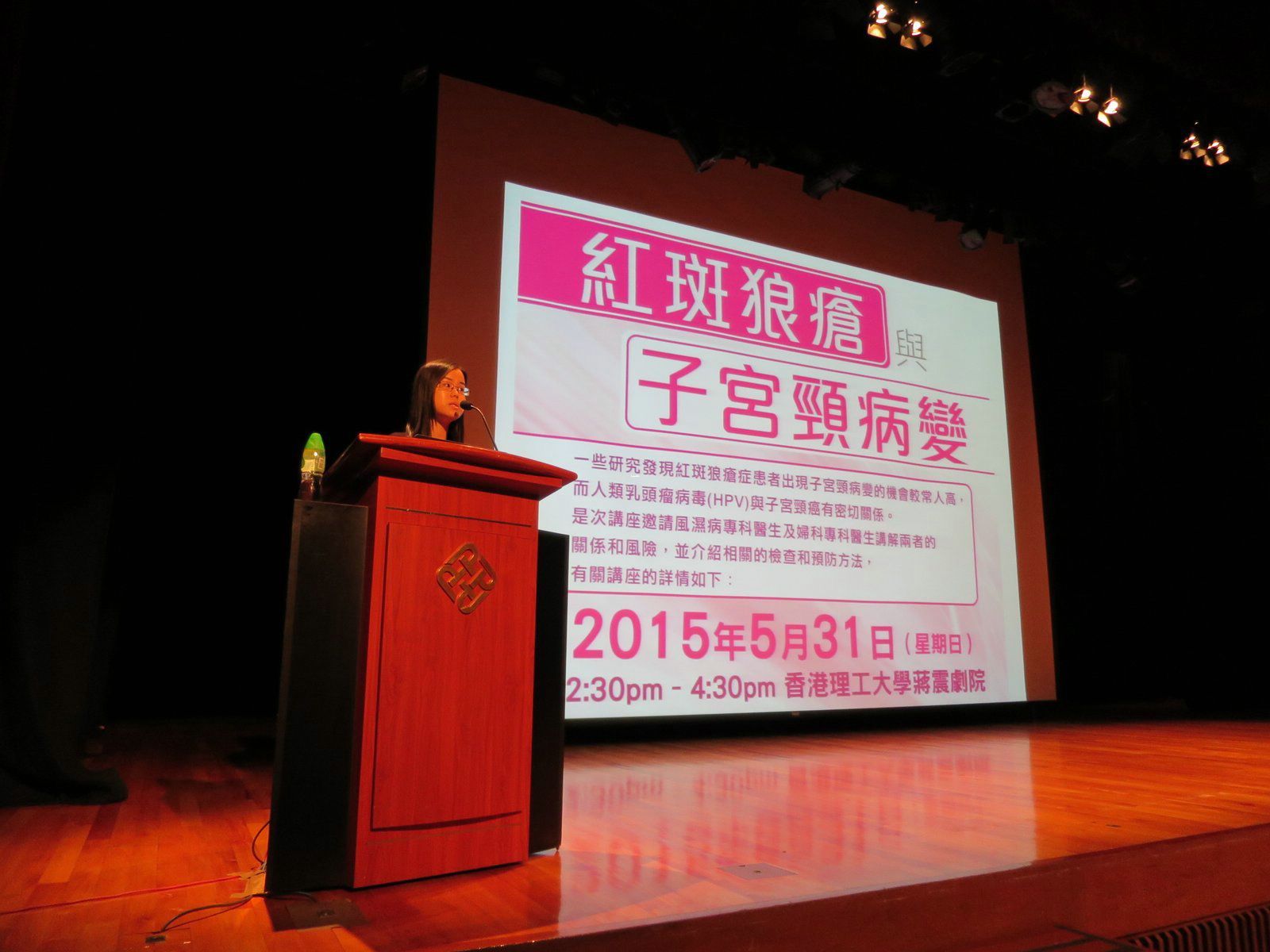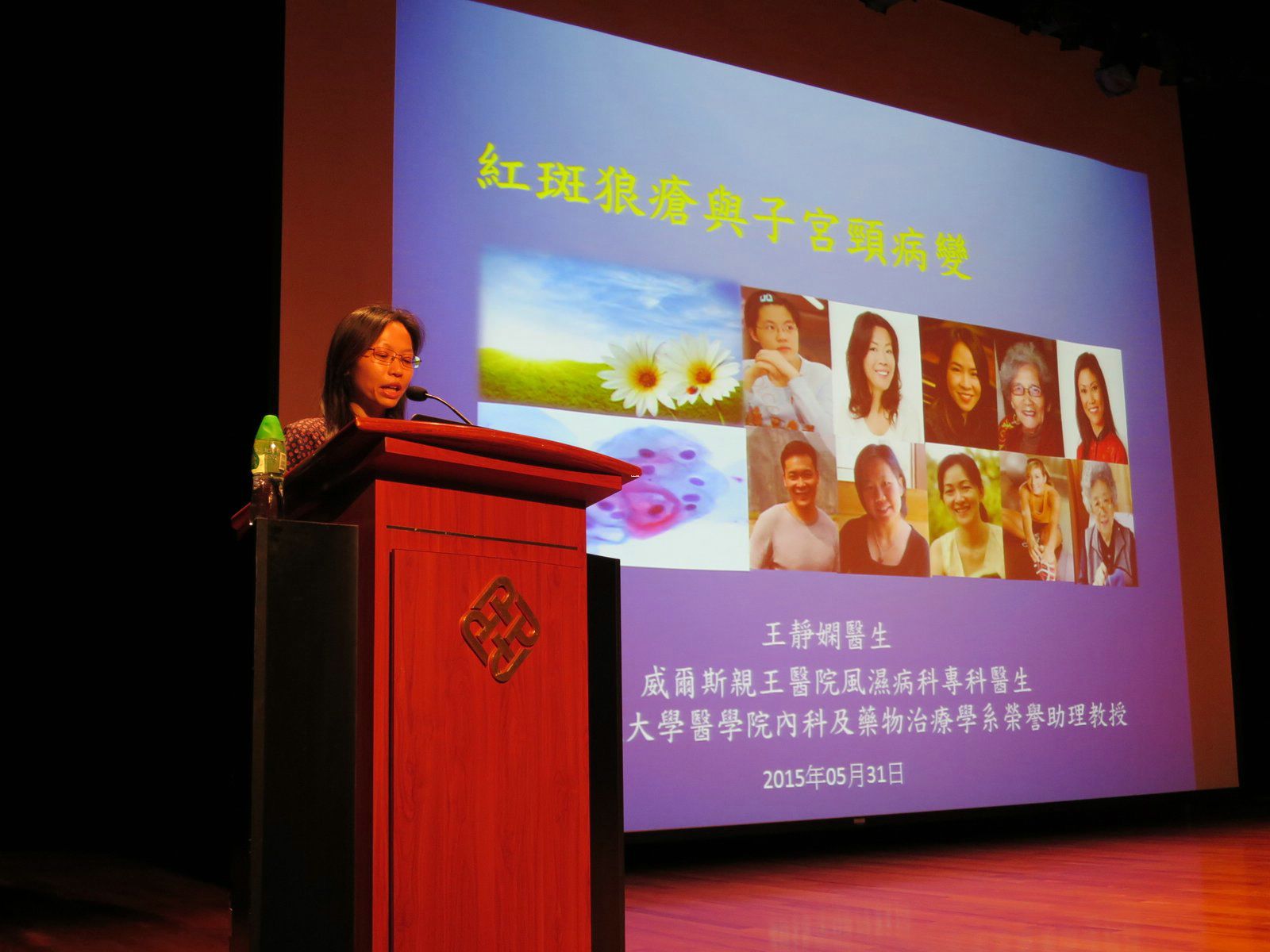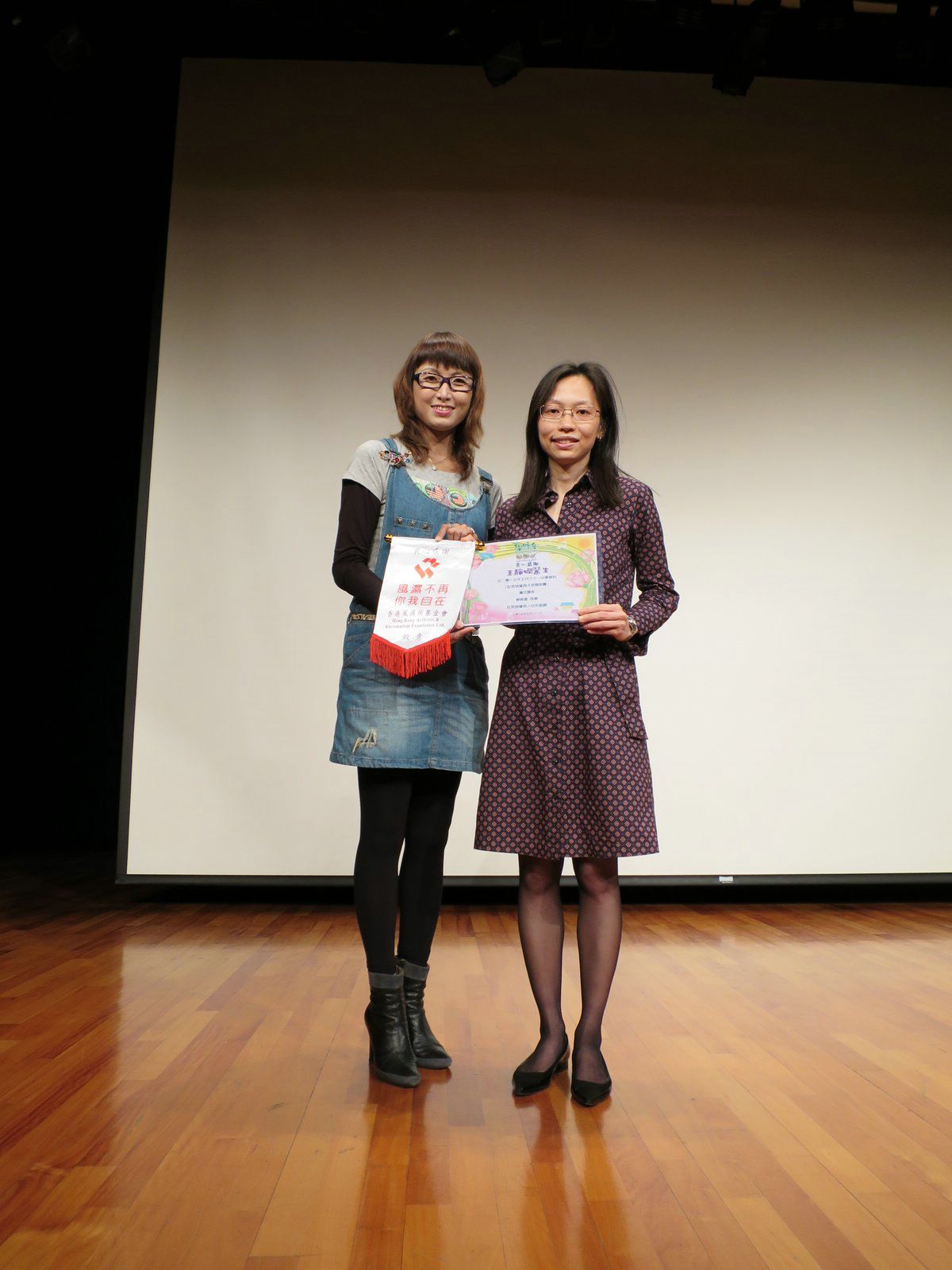Educational Talk – Cervical abnormalities in SLE
31st May 2015
Educational Talk – Cervical abnormalities in SLE was taken part in Chiang Chen Studio Theatre, The Hong Kong Polytechnic University on 31st May 2015. The talk aimed to enhance people’s understanding the relationship between SLE and cervical abnormalities. There were 99 participants in total.
The talk was started by Dr. Priscilla WONG, a specialist in Rheumatology, to introduce the basic information of SLE and cervical abnormalities. Around 70% of cervical cancer was caused by Human papillomavirus (HPV) infection particularly HPV 16 and 18. HPV was a virus. If people were infected without proper treatment, this might lead to abnormal growth of cervical cells and further develop into cancer. Some research showed the SLE patients had higher risk than the public of developing cervical abnormalities. Dr. WONG introduced several ways to prevent the diseases including quitting smoking, practicing safe sex, using condom when sexual intercourse, having regular cervical cancer screening (Pap smear test) and cervical cancer vaccination.
Apart from this, the talk was continued by Dr. Grace WONG, a specialist in Obstetrics & Gynaecology, to further explain the relationship between SLE and cervical abnormalities. The symptoms of the disease were also introduced. The risk of having cervical cancer could be highly reduced if cervical cancer screening was conducted regularly. She added female who had had sex should do the screening regularly. Prevention was better than cure. Dr. WONG repeated the ways to prevent the disease and urged every woman should consider cervical cancer vaccination no matter they had had sex or not. For SLE patients, there was no research showing they were not suitable to inject this vaccine. The cervical cancer vaccination was inactivated. If the disease activity was quite high, it was suggested to postpone the vaccination. .
Most participants were satisfied with the arrangement and content of the talk. They were interested in the relationship of the two diseases as well as the checking methods and hoped to participate to similar activities in the future.








